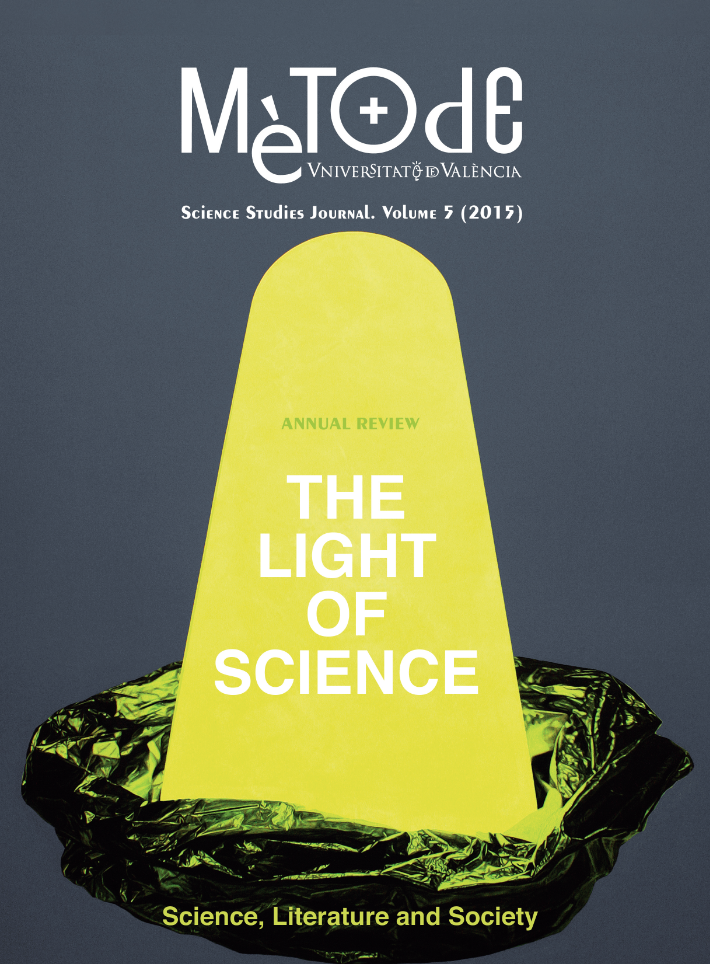Social robots: A meeting point between science and fiction
DOI:
https://doi.org/10.7203/metode.0.3546Keywords:
social robots, artificial intelligence, science fiction, Asimov, roboethics Abstract
Abstract
Industrial robots and androids in science fiction were worlds apart until recently, but now begin to merge with the rapid development of social robotics. Given the growing need for labour in the healthcare and service sectors, robots are being designed to interact with disabled or elderly people, or to take the place of receptionists or shop assistants in shopping malls, or even to act as support teachers or nannies. Within this context, efforts have grown to encourage mutual inspiration between techno-science and humanities. Ethical issues such as the influence of robotic nannies on child psyche, previously raised within the realms of literary works, are now being discussed in scientific forums.
 Downloads
Downloads
 References
References
Asimov, I., 1950. I, Robot. Gnome Press. New York.
Ballesté, F. and C. Torras, 2013. «Effects of Human-Machine Integration on the Construction of Identity». In Luppicini, R. (ed.). Handbook of Research on Technoself: Identity in a Technological Society. IGI Global. Hershey, EUA. DOI: <10.4018/978-1-4666-2211-1.ch030>.
Berger, P. and T. Luckmann, 1966. The Social Construction of Reality: A Treatise in the Sociology of Knowledge. Anchor Books. New York.
Bradbury, R., 1969. I Sing the Body Electric. Knopf Publishing. New York.
Bueno Gómez-Tejedor, S. and M. Peirano (eds.), 2009. El rival de Prometeo. Vidas de autómatas ilustres. Impedimenta. Madrid.
Dick, Ph. K., 1955. «Nanny». Startling Stories, 33(1): 50-61.
Ihde, D., 2002. Bodies in Technology. University of Minnesota Press. Minneapolis.
Nature, 2007. «Many Worlds». Nature, 448(7149): 1-104.
Rushkoff, D.; Hammond, R.; Thomas, S. and H. Markus, 2012. The Tomorrow Project. Bestselling Authors Describe Daily Life in the Future. Intel. Santa Clara.
Sharkey, N. and A. Sharkey, 2010. «The Crying Shame of Robot Nannies». Interaction Studies, 11(2): 161-190. DOI: <10.1075/is.11.2.01sha>.
Stephenson, N., 2011. «Innovation Starvation». Wired, 27 October. Available at: <http://www.wired.com/2011/10/stephenson-innovation-starvation>.
Torras, C., 2008. La mutació sentimental. Pagès Editors. Lleida. Torras, C., 2010. «Robbie, the Pioneer Robot Nanny: Science Fiction Helps Develop Ethical Social Opinion». Interaction Studies, 11(2): 269-273. DOI: <10.1075/is.11.2.15tor>.
Published
How to Cite
-
Abstract1400
-
PDF (Català)713
-
PDF (Español)1359
-
PDF284
Issue
Section
License
![]()
All the documents in the OJS platform are open access and property of their respective authors.
Authors publishing in the journal agree to the following terms:
- Authors keep the rights and guarantee Metode Science Studies Journal the right to be the first publication of the document, licensed under a Creative Commons Attribution-NonCommercial-NoDerivatives 4.0 International License that allows others to share the work with an acknowledgement of authorship and publication in the journal.
- Authors are allowed and encouraged to spread their work through electronic means using personal or institutional websites (institutional open archives, personal websites or professional and academic networks profiles) once the text has been published.





